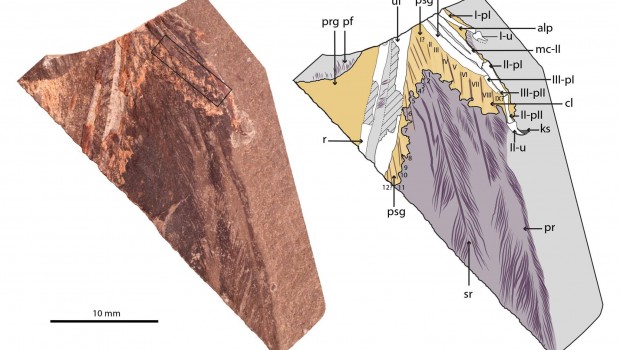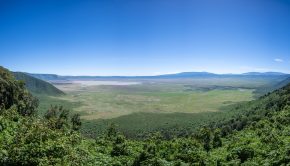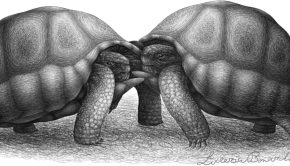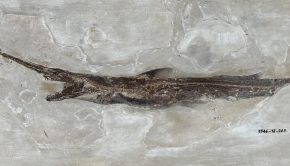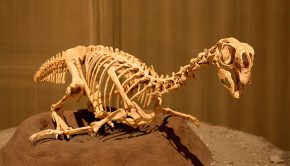Soft-tissue preservation in the wing of an Early Cretaceous bird
Birds have a long evolutionary history; the earliest of them, the famed Archaeopteryx, lived 150 million years ago in what is today southern Germany. However, whether these early birds were capable of flying and if so, how well, has remained shrouded in scientific controversy. A new discovery published in the journal Scientific Reports sheds a bit of light on this issue.
“It is very surprising that despite being skeletally quite different from their modern counterparts, these primitive birds show striking similarities in their soft anatomy” Guillermo Navalón
The new 125-million-year-old fossil, studied by an international team of palaeontologists, led by Guillermo Navalón, PhD student at the University of Bristol, consists of a right wing of a primitive bird. It preserves not only the articulated bones of the forelimb but also abundant remains of the plumage and of the soft-tissues of the wing. Specifically, it documents, for the first time, an intricate arrangement of fibres which matches anatomically with a complex network of ligaments, muscles and tendons present in modern-day birds. This network endures the position and controls the fine adjustments of the wing’s main feathers, allowing living birds to flight efficiently and master the sky. The presence of these structures in the wing of such a primitive bird, supports the notion that at least some of the most ancient birds performed aerodynamic feats in a fashion similar to those of many living birds.
“The anatomical match between the preserved dermic system in the fossil and those that characterize the wings of living birds strongly indicates that some of the earliest birds were capable of aerodynamic prowess alike many present-day birds” said Dr. Chiappe, NHM’s Director of the Dinosaur Institute (Los Angeles, USA).
Ancient birds may have flown over the heads of dinosaurs but some aspects of the precise flight modes of these early fliers still remain unclear. “Fossils such as this are an open-window to deep time and allow scientists to access to the most intricate aspects of the early evolution of the flight of birds” says Dr. Jesús Marugán Lobón from Universidad Autónoma in Madrid.
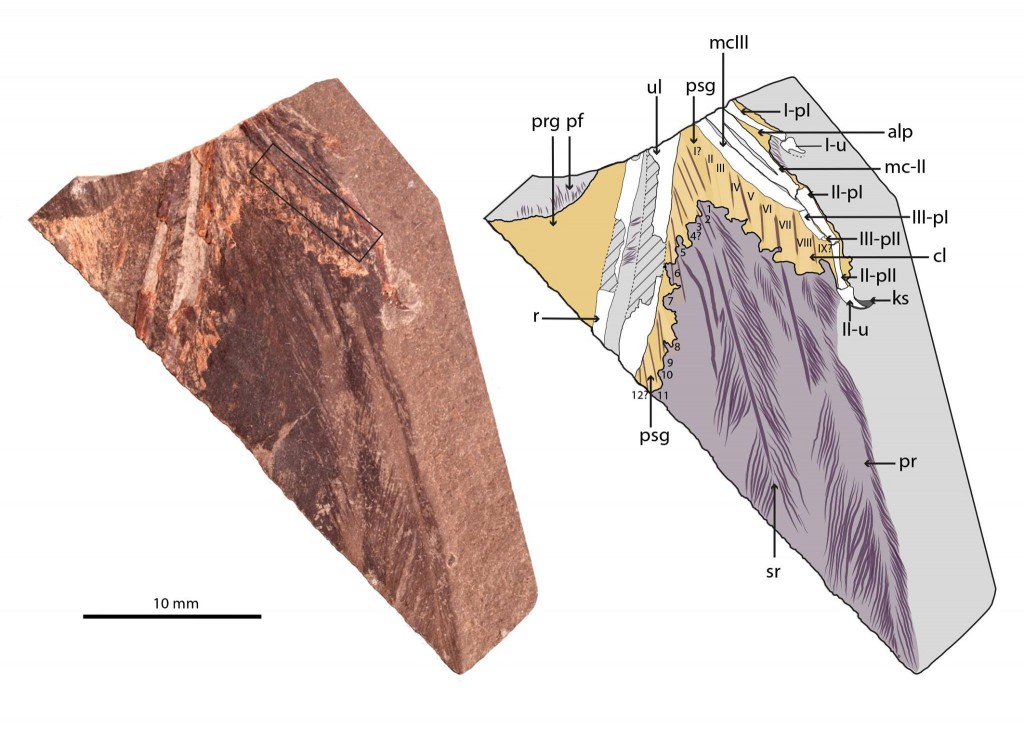
Photograph and interpretive drawing of slab. Black-lined inset in the photograph delineates the area of the transition between bone and soft tissue magnified in Fig. 2A. Abbreviations: alp, alular patagium; cl, calamus; ks, keratinous sheath; mc-II; metacarpal II; mc-III, metacarpal III; pf, plumulaceous feathers; pr, primary remex; prg, propatagium; psg, postpatagium; r, radius; sr, secondary remex; ul, ulna; I-pI, first phalanx of digit I; I-u, ungual phalanx of digit I; II-pI, first phalanx of digit II; II-pII, second phalanx of digit II; II-u, ungual phalanx of digit II; III-pI, first phalanx of digit III; III-pII, second phalanx of digit III.
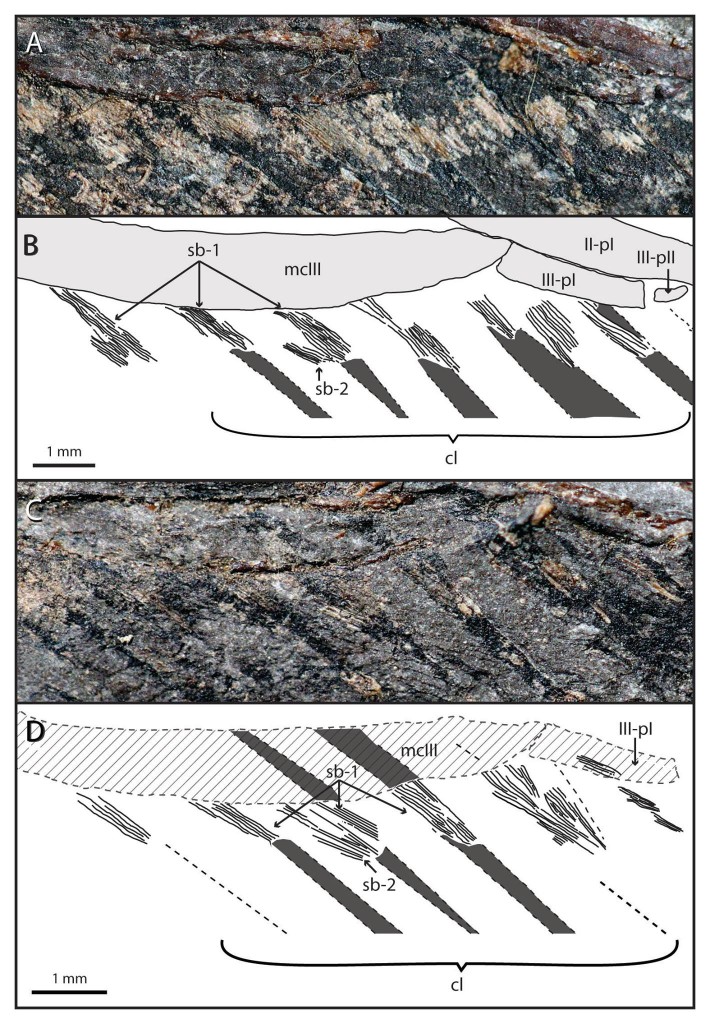
(A,B) Photograph and interpretive drawing of tissue and details (Type 1 and 2 bundles of stripes) below skin level of the postpatagium (inset shown in Fig. 1). (C,D) Photograph and interpretive drawing of the same region in the counterslab. Abbreviations: cl, calami; mcIII, metacarpal III; sb-1, Type 1 striated bundle; sb-2, Type 2 striated bundle; II-pI, first phalanx of digit II; III-pI, first phalanx of digit III; III-pII, second phalanx of digit III. (Photograph by José Antonio P. Gracia).
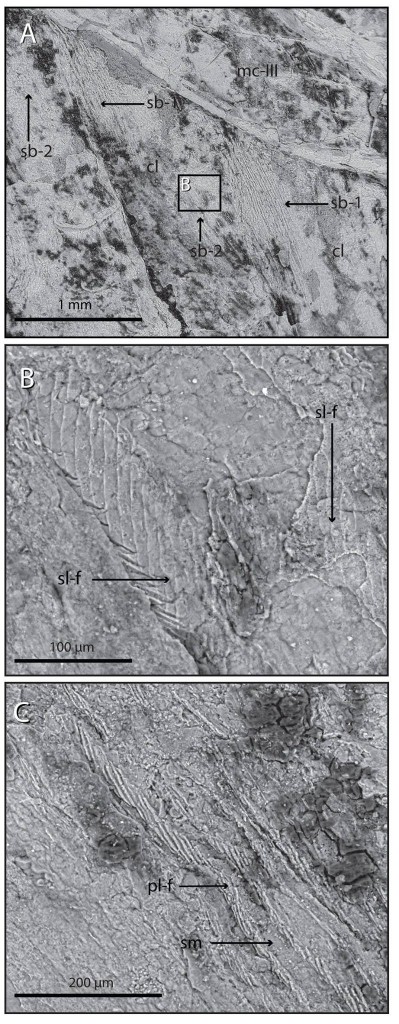
(A) SEM image of two consecutive primary feather calami and their respective Type 1 and Type 2 striated bundles. (B) SEM close-up image of the area delineated by an inset in (A), of a Type 2 striated bundle containing strap-like fibres. (C) SEM close-up of a Type 1 striated bundle showing its alternating pattern of parallel plait-like fibres and smooth matrix. Abbreviations: cl, calami; mcIII, metacarpal III; sb-1, type 1 striated bundle; sb-2, type 2 striated bundle; pl-f, plait-like fibres; sm, smooth matrix; sl-f, strap-like fibres.

